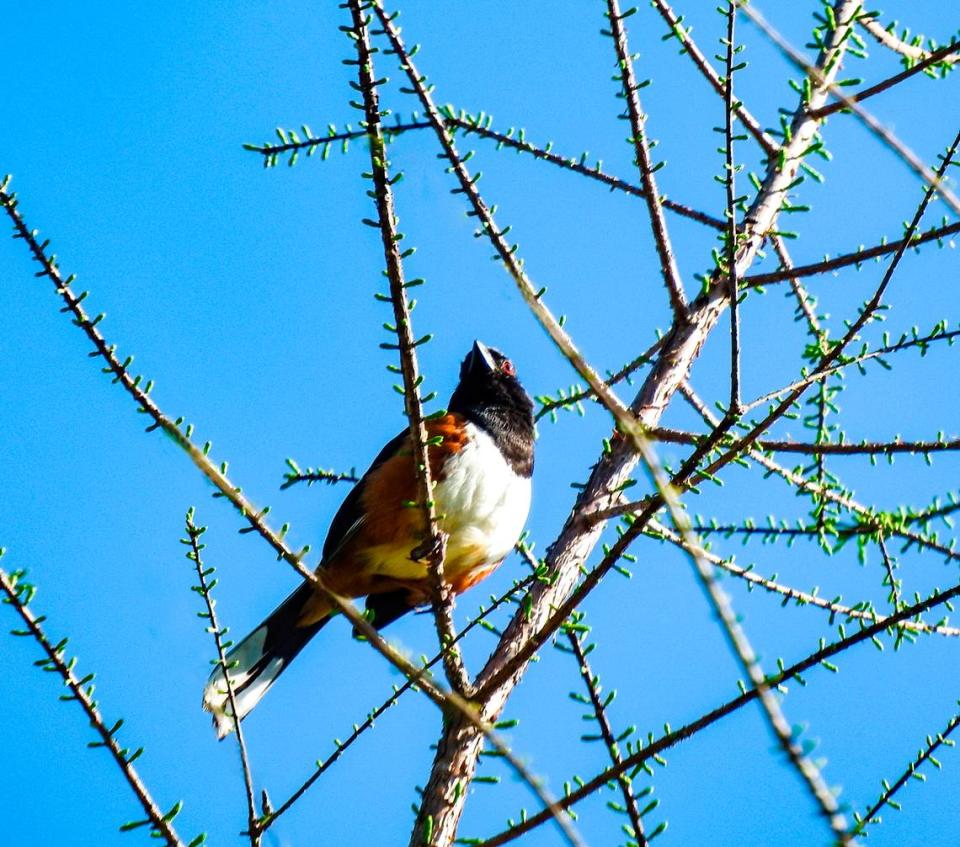Towhees are elusive birds at home in the underbrush and sometimes raise other birds’ young
Usually you’ll hear an Eastern Towhee before you see it.
This common, colorful bird spends much of its time rustling around in the undergrowth, foraging noisily through leaf litter or creeping through bushes and thickets. You may also hear its repetitive call (chewink), made by both sexes.
With patience and luck, you’ll spot a robin-sized bird with a short, thick bill, chunky body and long tail. Males are black above, with a white breast and reddish-brown sides. Females are brown where the males are black.
Eastern Towhees are related to American sparrows and juncos, and they’re year-round residents in the Lowcountry and elsewhere in the Southeast. Look for them in overgrown fields, along forest edges, and (if you have sufficient shrubbery) in your own back yard.
Towhees feed on insects and other small invertebrates, plus a variety of plant materials.
During the breeding season, males defend individual territories, making their presence known by a distinctive song (drink-your-tea), often from a high perch.
Pairs nest on or near the ground, usually underneath shrubs, and raise two or three broods per year. Incubation is mostly by the female, but both parents feed the young.

All this parental care, though, is sometimes extended to the offspring of another species — the brown-headed cowbird, a type of blackbird.
Cowbirds don’t build nests of their own, but instead exploit the parental instincts of other nesting birds. The victims (hosts) of this well-studied “brood parasitism” include some 140 species, including Eastern Towhees.
If a female cowbird spots a towhee’s nest, she removes an existing egg and replaces it with one of her own. Towhee parents, apparently unable to recognize the impostor, incubate all the eggs as usual and raise the cowbird along with their own nestlings.
Overall, brood parasitism doesn’t seem to pose serious threats to Eastern Towhee populations, and the species is currently common throughout much of its range. But like other backyard birds, towhees may face potential habitat loss and disturbance from human activities in the future.
Vicky McMillan is a retired biologist who lives on Hilton Head Island and writes a column about the flora and fauna in South Carolina’s Lowcountry.

